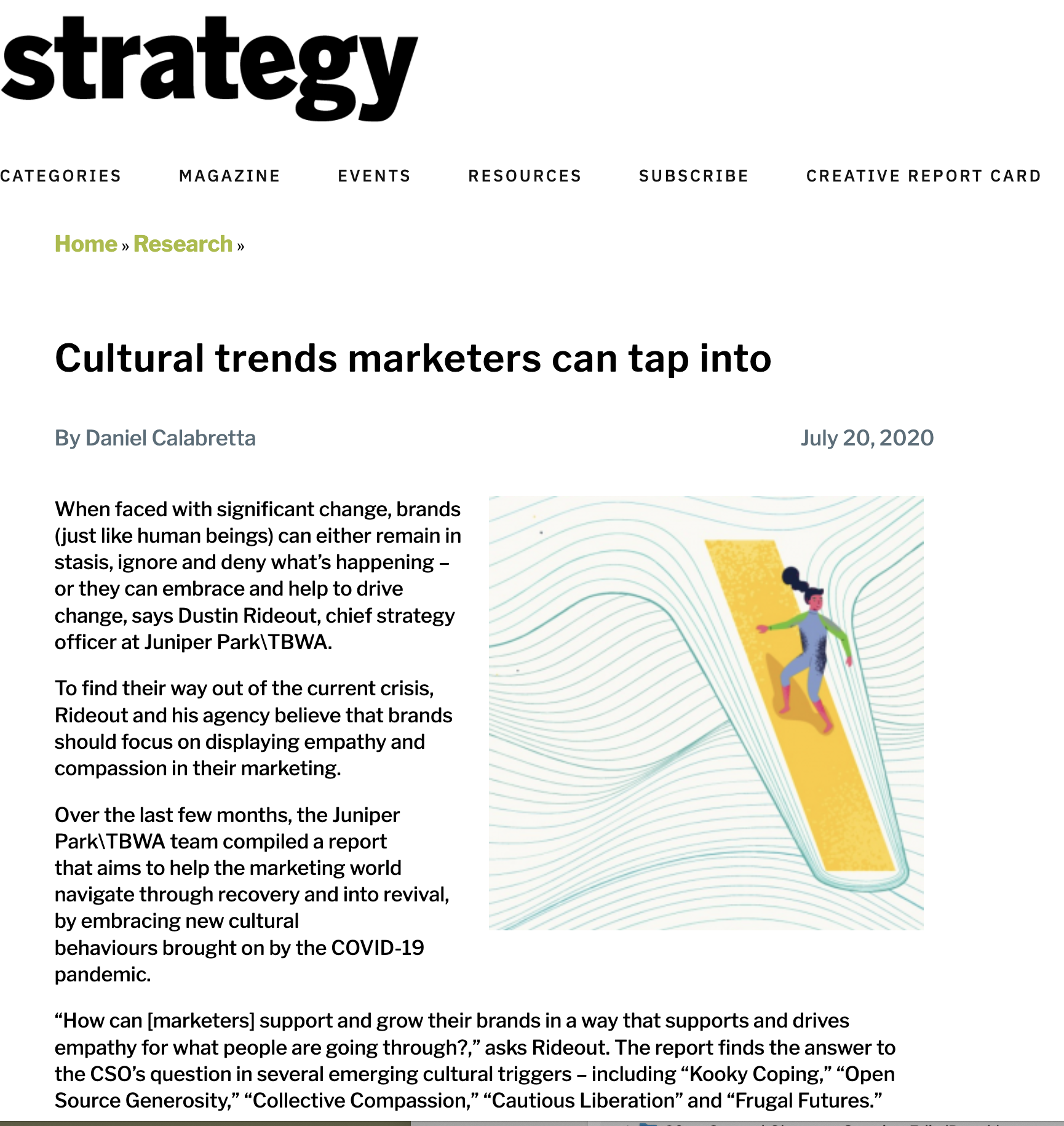It was shortly after “We the North” had debuted, and Sid Lee’s then SVP of strategy, partner Dustin Rideout was sitting with his colleagues Jared Stein and Jeff Da Silva at a Toronto Raptors game at the former Air Canada Centre.
In front of them, a group of young boys spent the entire game chanting the now famous slogan. At one point, Rideout, now partner and CSO at The Hive, leaned over to Da Silva and said, “Well, it might not ever get better than this work for us.”
What became an emotional rallying cry heard from coast-to-coast began with an examination of where the Toronto Raptors’ brand created impact. It quickly became clear to Rideout and the Sid Lee creative team that there was an opportunity to turn the franchise’s perceived weakness of being an outsider into a strength.
MLSE had originally enlisted Sid Lee to create a new Raptors logo to replace the dinosaur used since its inaugural season in 1995. The team felt it was on course to challenge for NBA championship, and wanted to become the "coolest" team in the NBA, Da Silva told Campaign back in 2019.
It was a daunting task for a franchise that had spent much of its existence on the league's fringes, but Sid Lee turned that outsider status into the rallying point for the creative team.
The insight behind it was simple and straightforward: In Canada, we’re outsiders playing our own game. “I can quite honestly say that the connection of the insight to idea is among the tightest of anything I’ve ever been part of,” said Rideout.
It was a bold approach, particularly coming from a country that often looks to the U.S. for validation. "[We thought] what can we say about us that's true? Well, we're the only team in the NBA outside of the United States,” said Da Silva in 2019. “We also wanted to represent Toronto in a way that was a little bit different than the cliche symbols you associate with Canada in general."
That meant no pristine lakes, snow-peaked mountains, and definitely no beavers. Instead, the visuals for the accompanying "We the North" TV spot featured Toronto's concrete playgrounds and graffiti-covered back alleys, images more aligned with the sport's urban appeal.
There were also countless proposed slogans, but "We the North" worked for two main reasons, said Da Silva: It felt like a declaration (a kind of "we the people" for basketball fans), and it also sounded wrong in just the right way.
"We never entertained 'We are the North,' but we were asked multiple times by people who were involved if that's what it should be," Tom Koukodimos, then CCO at Sid Lee, told us five years ago. There were even discussions about whether there should be a comma after the word "We."
A decade after "We the North's" debut, and having just limped to a 25-57 season, the Raptors are once again trying to climb the summit to an NBA championship.
Everything is different now, the promise of an up-and-coming team giving way to the uncertainty that accompanies any rebuild, yet “We the North” endures—a rallying cry and statement of pride for the sole Canadian team in a U.S. dominated league.
It’s ironic that for all of its cultural resonance, “We the North” was never a big winner for Sid Lee on the awards show circuit. “It’s the most famous work that’s won the least amount of advertising awards that I’ve ever worked on,” said Rideout.
But now, having toppled two presumptive favourites in the first two rounds of the Campaign Cup, and looking like a strong contender to win it all, the Raptors have a chance at a new title, “Greatest Canadian Ad of the 21st Century.”
Canadians tend to be self-effacing when asked to predict their chances in competition, but Rideout summoned some of “We the North’s” forthright attitude when asked about its chances in the latter stages of the Campaign Cup. “This is sports, we play to win,” he said. “Let’s go Raptors. #WeTheNorth.”







